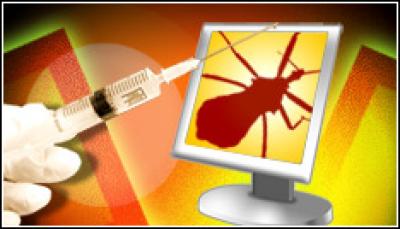New Microsoft Windows 7 Flaw Found

Microsoft says disabling Aero will keep Windows 7 users safe from unlikely attacks on this flaw
A new bug, which could allow hackers to seize control of 64-bit versions of Windows 7 and Windows Server 2008 R2 has been revealed in a warning from Microsoft.
Microsoft’s warning says the flaw is difficult to exploit, but the 64-bit edition of Windows 7 has an error in the Canonical Display Driver (CDD), which also affects Windows Server 2008 R2 x64 as well as Windows Server 2008 R2 for Itanium systems. The CDD is used by desktop composition to blend the Windows graphics device interface and DirectX drawing.
Hard to exploit
 According to Microsoft, CDD does not properly parse information copied from user mode to kernel mode, and an attacker could exploit the vulnerability to cause an affected system to stop responding and automatically restart. It is also possible for an attacker to exploit the bug to run arbitrary code, but memory randomisation makes this difficult.
According to Microsoft, CDD does not properly parse information copied from user mode to kernel mode, and an attacker could exploit the vulnerability to cause an affected system to stop responding and automatically restart. It is also possible for an attacker to exploit the bug to run arbitrary code, but memory randomisation makes this difficult.
An attacker who attempts to exploit this issue for code execution would need to write executable content to a specific space in kernel memory,” Microsoft wrote in the advisory. “However, since the starting address will be random, the final pointer destination will be difficult to predict. The implementation of Address Space Layout Randomization (ASLR) by default on affected systems further complicates this prediction.”
In addition, the vulnerability only affects Windows systems if they have the Aero theme installed, and it is not switched on by default in Windows Server 2008 R2, noted Jerry Bryant, group manager of Microsoft Security Response Center communications.
“With that in mind, we are giving this vulnerability a preliminary Exploitability Index rating of 3, meaning we’ve deduced so far that reliable exploit code is unlikely,” blogged Bryant. “We’re currently developing a security update for Windows that will address the vulnerability. In the meantime, customers may choose to disable Windows Aero as a workaround to protect against potential threats. With Aero disabled, the path by which cdd.dll can be exploited is bypassed.”
Instructions on disabling Aero are contained within the advisory under “Suggested Actions.”
Microsoft patched two security flaws in last week’s routine “patch Tuesday” release